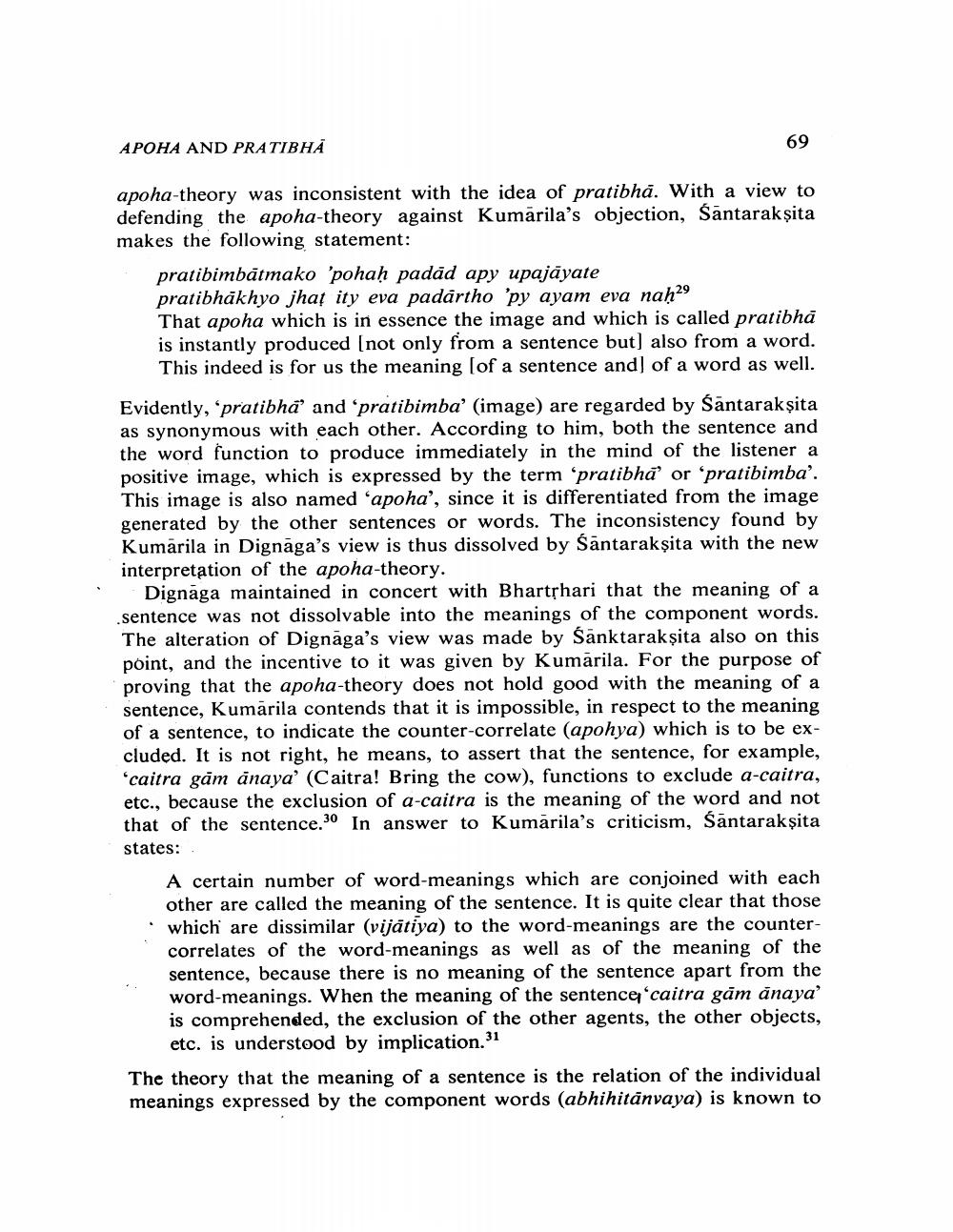Book Title: Apoha And Pratibha Author(s): Masakki Hattori Publisher: Masakki Hattori View full book textPage 9
________________ APOHA AND PRATIBHA 69 apoha-theory was inconsistent with the idea of pratibha. With a view to defending the apoha-theory against Kumärila's objection, Santarak sita makes the following statement: pratibimbatmako 'pohaḥ padad apy upajāyate pratibhākhyo jhat ity eva padartho 'py ayam eva naḥ29 That apoha which is in essence the image and which is called pratibhā is instantly produced (not only from a sentence but also from a word. This indeed is for us the meaning (of a sentence and) of a word as well. Evidently, “pratibha and 'pratibimba' (image) are regarded by Santarakṣita as synonymous with each other. According to him, both the sentence and the word function to produce immediately in the mind of the listener a positive image, which is expressed by the term 'pratibhā' or 'pratibimba'. This image is also named 'apoha', since it is differentiated from the image generated by the other sentences or words. The inconsistency found by Kumarila in Dignāga's view is thus dissolved by Santarakṣita with the new interpretation of the apoha-theory. Dignāga maintained in concert with Bhartrhari that the meaning of a .sentence was not dissolvable into the meanings of the component words. The alteration of Dignaga's view was made by Sanktarakṣita also on this point, and the incentive to it was given by Kumarila. For the purpose of proving that the apoha-theory does not hold good with the meaning of a sentence, Kumārila contends that it is impossible, in respect to the meaning of a sentence, to indicate the counter-correlate (apohya) which is to be excluded. It is not right, he means, to assert that the sentence, for example, 'caitra gam anaya' (Caitra! Bring the cow), functions to exclude a-caitra, etc., because the exclusion of a-caitra is the meaning of the word and not that of the sentence.30 In answer to Kumarila's criticism, Santarakṣita states: A certain number of word-meanings which are conjoined with each other are called the meaning of the sentence. It is quite clear that those which are dissimilar (vijätiya) to the word-meanings are the countercorrelates of the word-meanings as well as of the meaning of the sentence, because there is no meaning of the sentence apart from the word-meanings. When the meaning of the sentence 'caitra gam anaya' is comprehended, the exclusion of the other agents, the other objects, etc. is understood by implication." The theory that the meaning of a sentence is the relation of the individual meanings expressed by the component words (abhihitānvaya) is known toPage Navigation
1 ... 7 8 9 10 11 12 13
